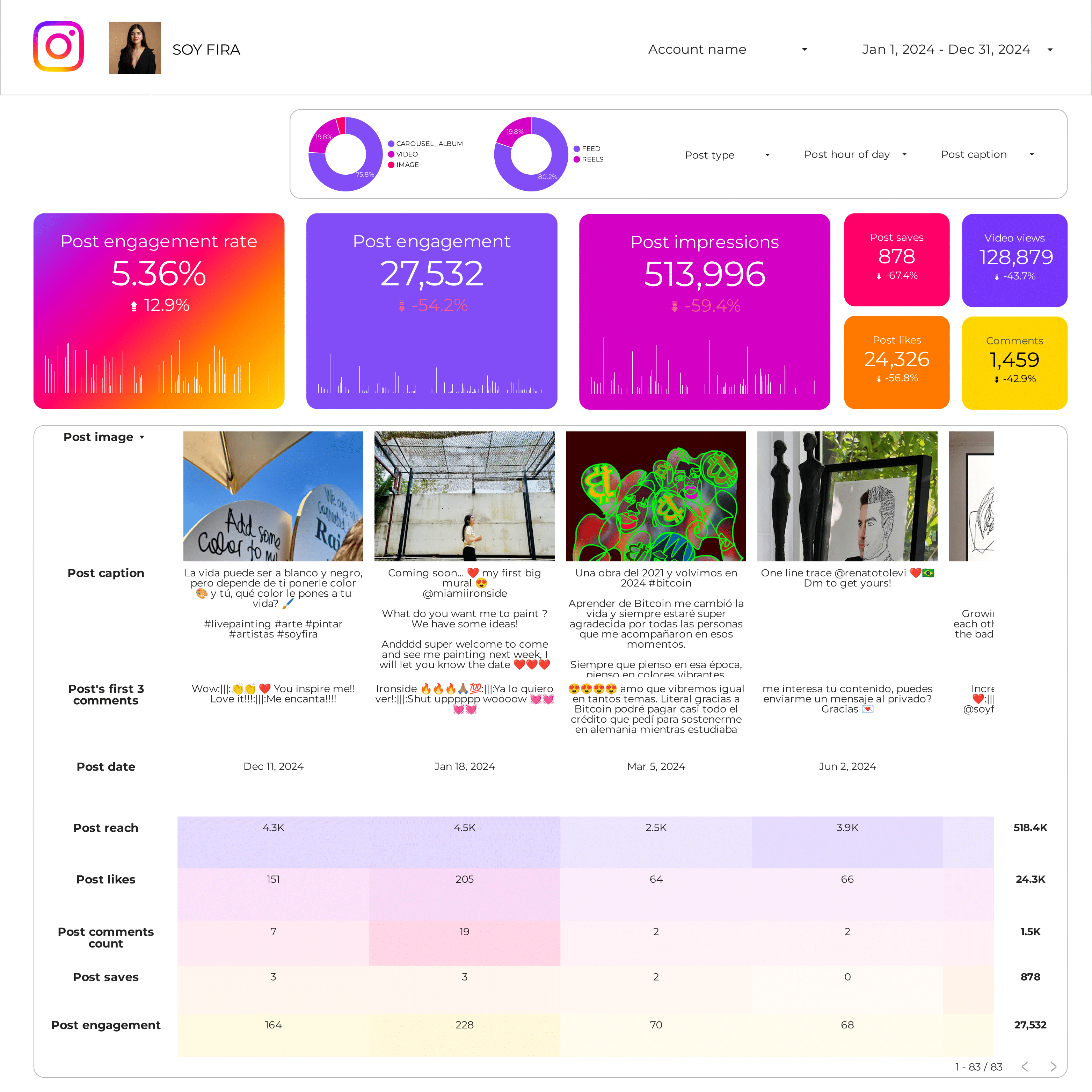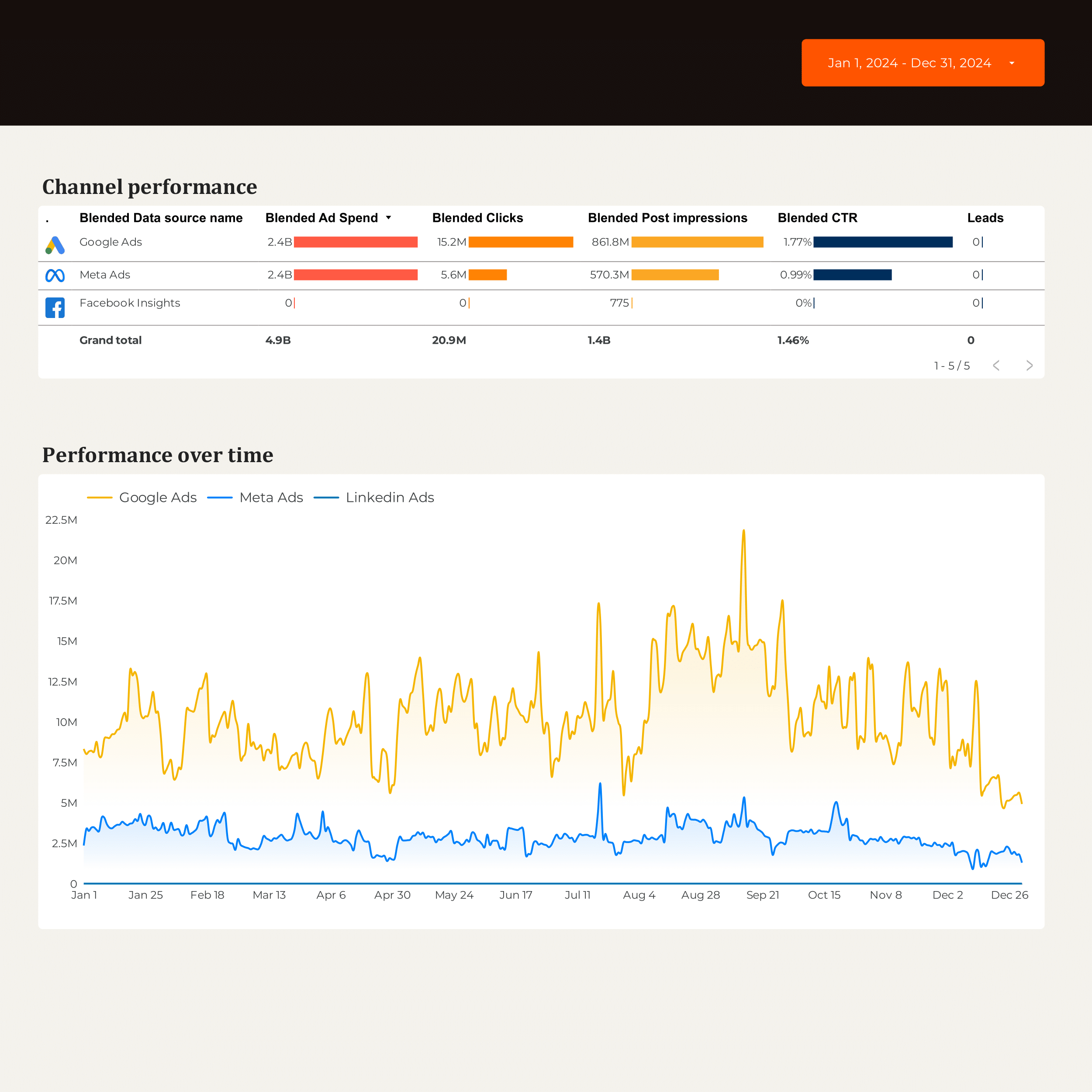
B2B Marketing performance Report template for Marketing teams and agencies
Optimize B2B Marketing performance with this report template. Track metrics like conversion rate, cost per acquisition, and customer lifetime value. Analyze CRM contacts and segment by industry, company size, and location. Ideal for marketing teams to measure and strategize using B2B, CRM, and Email Marketing data sources.
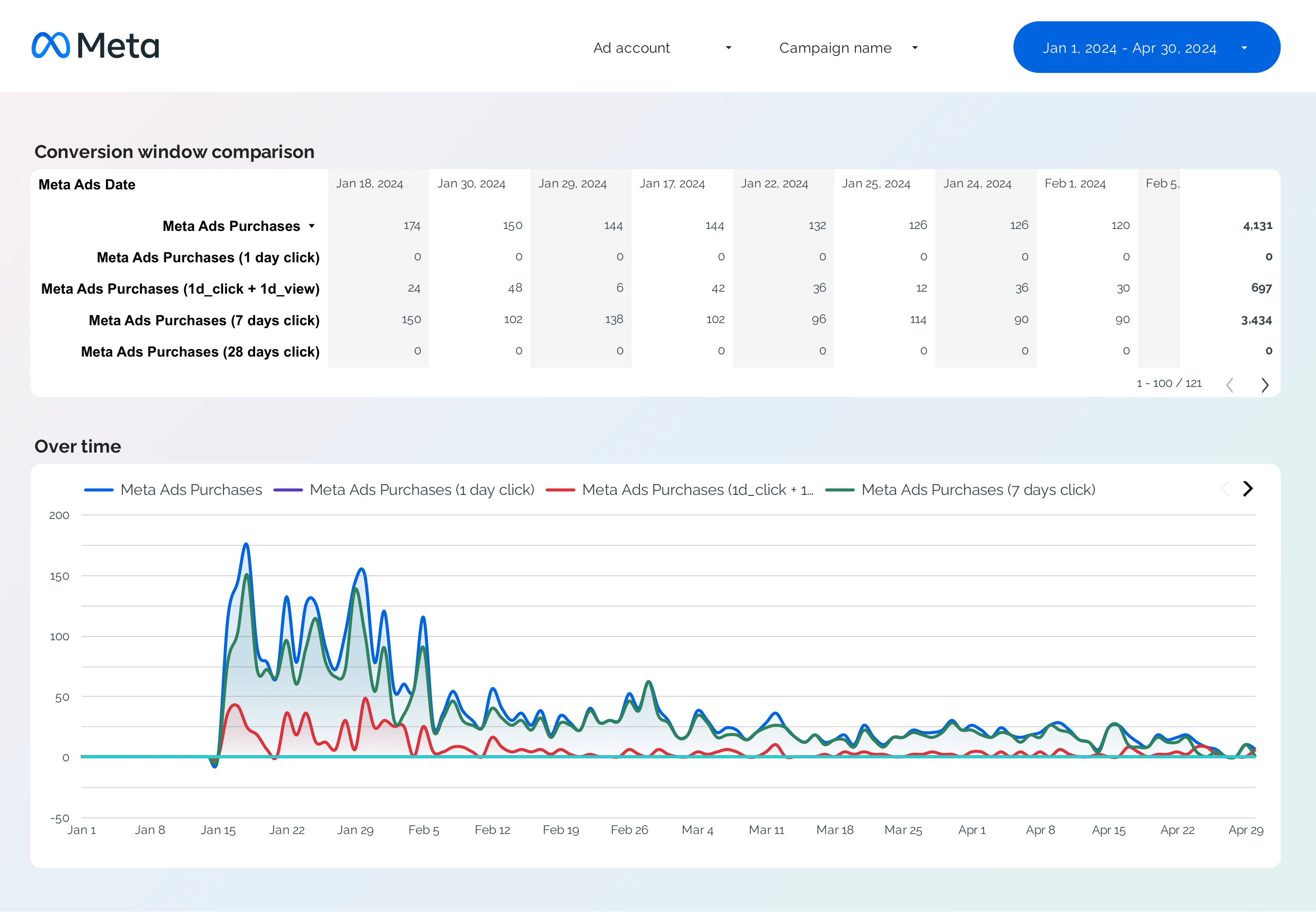
Facebook Ads Attribution Report template for Marketing teams and agencies
Get the actual Facebook Ads Attribution on Looker Studio template used by Porter to monitor PPC performance.
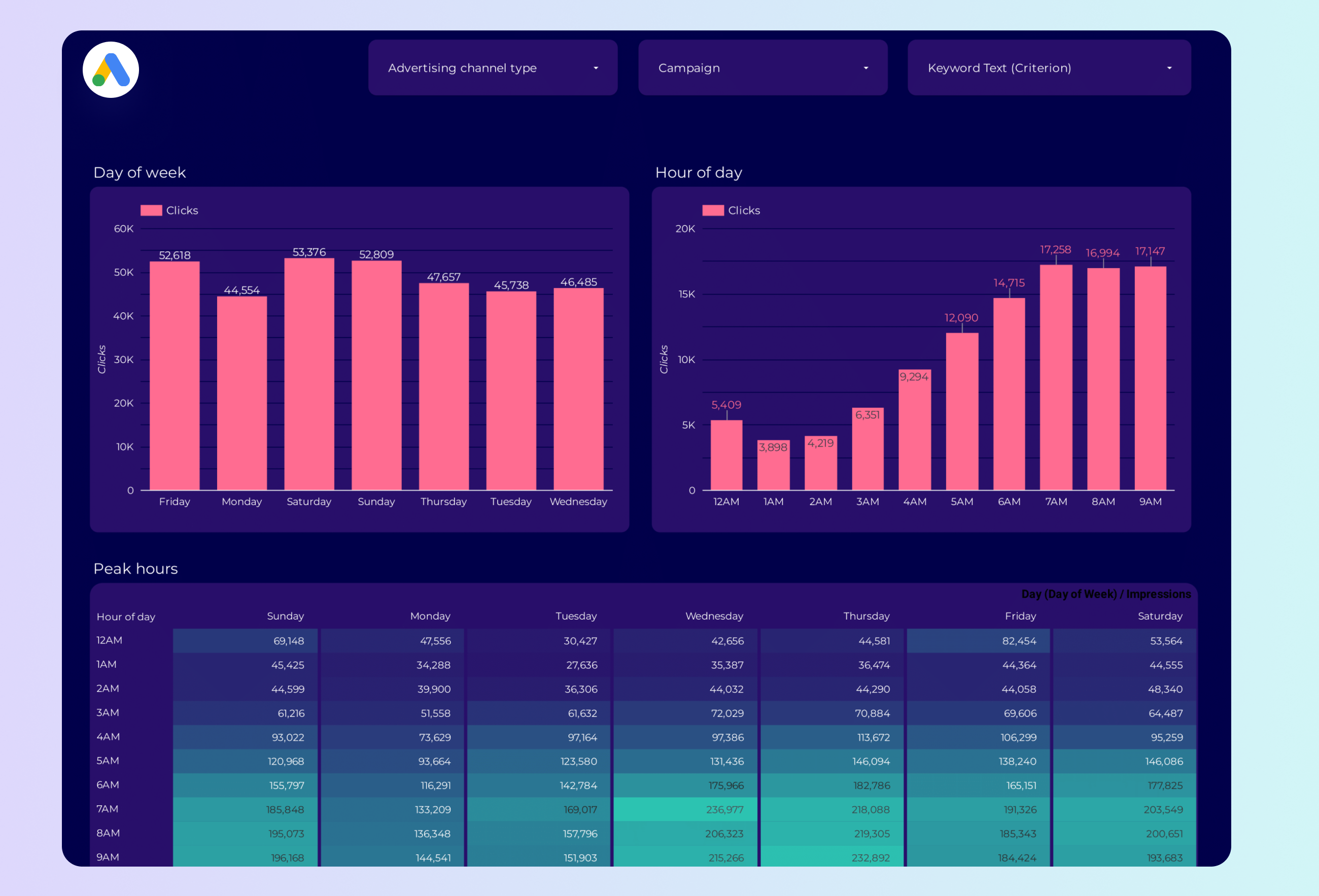
Google Ads Peak hours Report template for Marketing teams and agencies
Optimize your PPC strategy with the Google Ads Peak hours report template. Track key metrics like conversion rate, CPC, and CTR. Analyze performance by campaign type, device, and time. Measure impressions and audience size during peak hours. Ideal for marketing teams to consolidate insights and achieve specific goals.
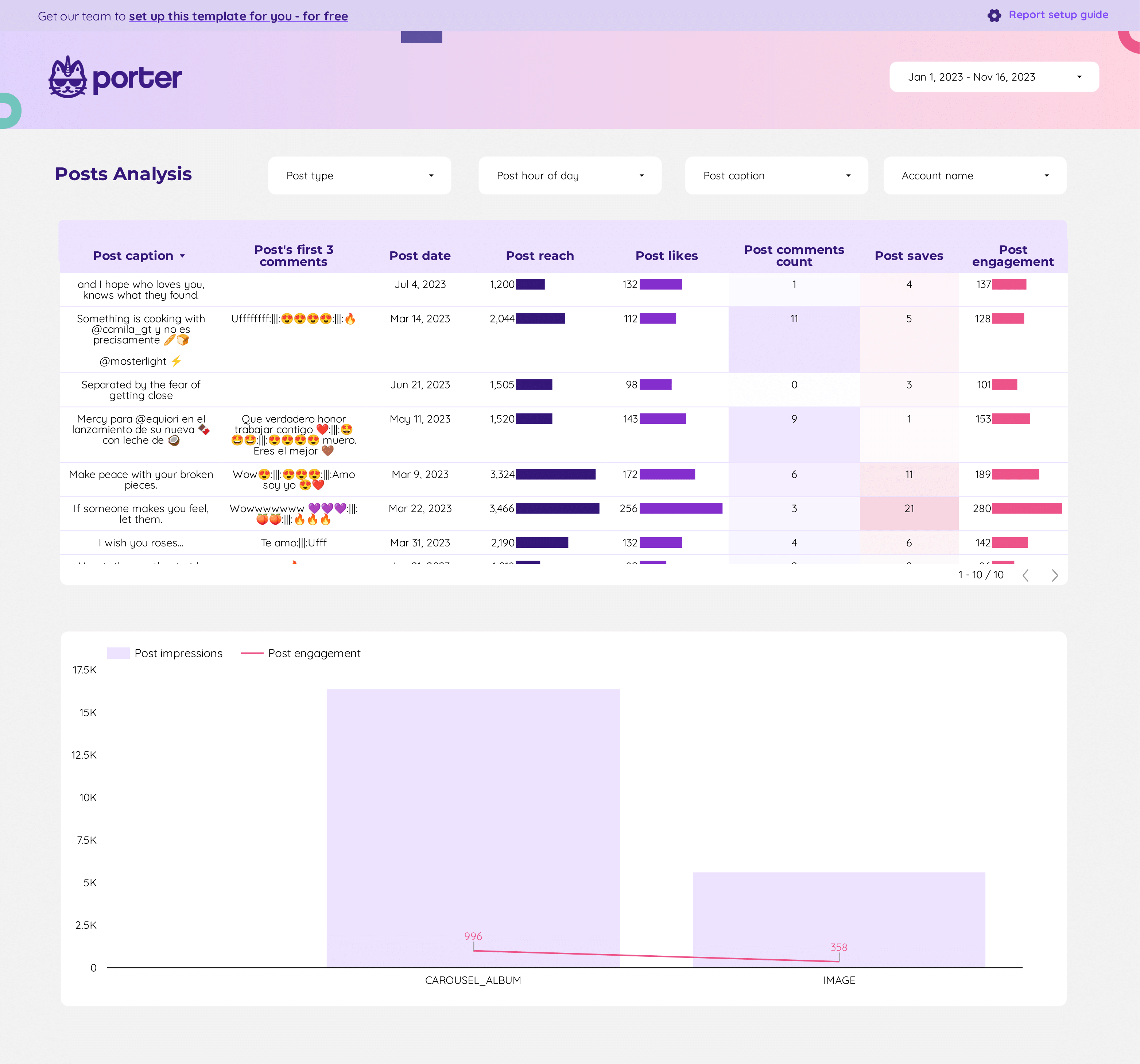
Instagram Insights Hashtags Report template for Marketing teams and agencies
Optimize your strategy with the Instagram Insights Hashtags report template. Analyze conversion rates, social media reach, and brand mentions. Segment by audience, channel, and time. Perfect for marketing teams to track key metrics and enhance performance using data from Instagram Insights and social media.
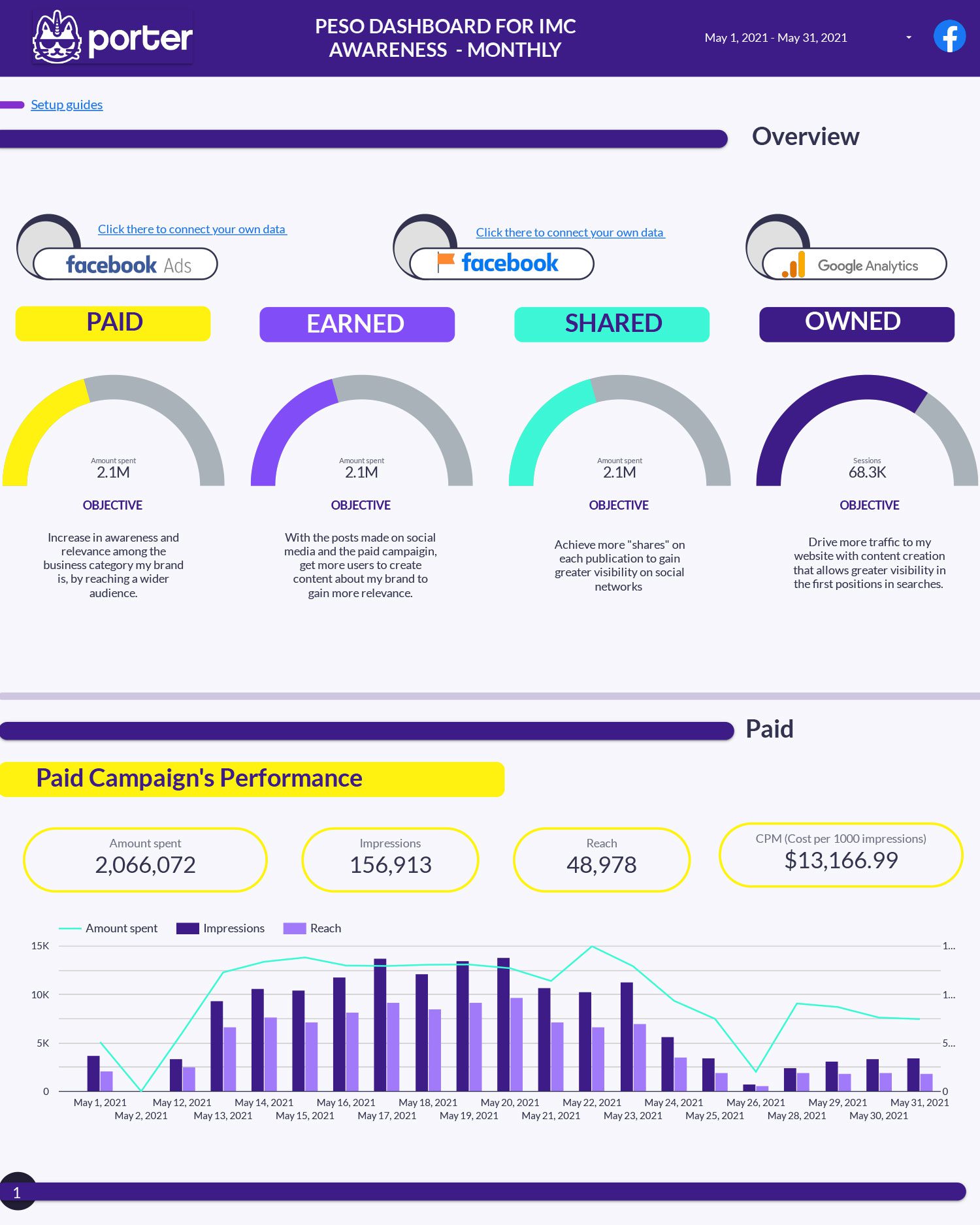
Peso model Report template for Marketing teams and agencies
Analyze key metrics such as leads, conversion rates, and engagement with the Peso model report template. Evaluate campaign performance across Facebook Ads, Instagram Insights, and SEO. Segment by audience demographics and timeframes. Perfect for marketing teams to track e-commerce and social media strategies efficiently.

SEM Report template for Marketing teams and agencies
Optimize your SEM strategy with this report template. Analyze cost per conversion, conversion rate, and ROAS. Measure click-through rate, social media engagement, and organic search ranking. Segment by audience, content, platform, and more. Perfect for PPC specialists to track Google Ads and Paid Media performance.
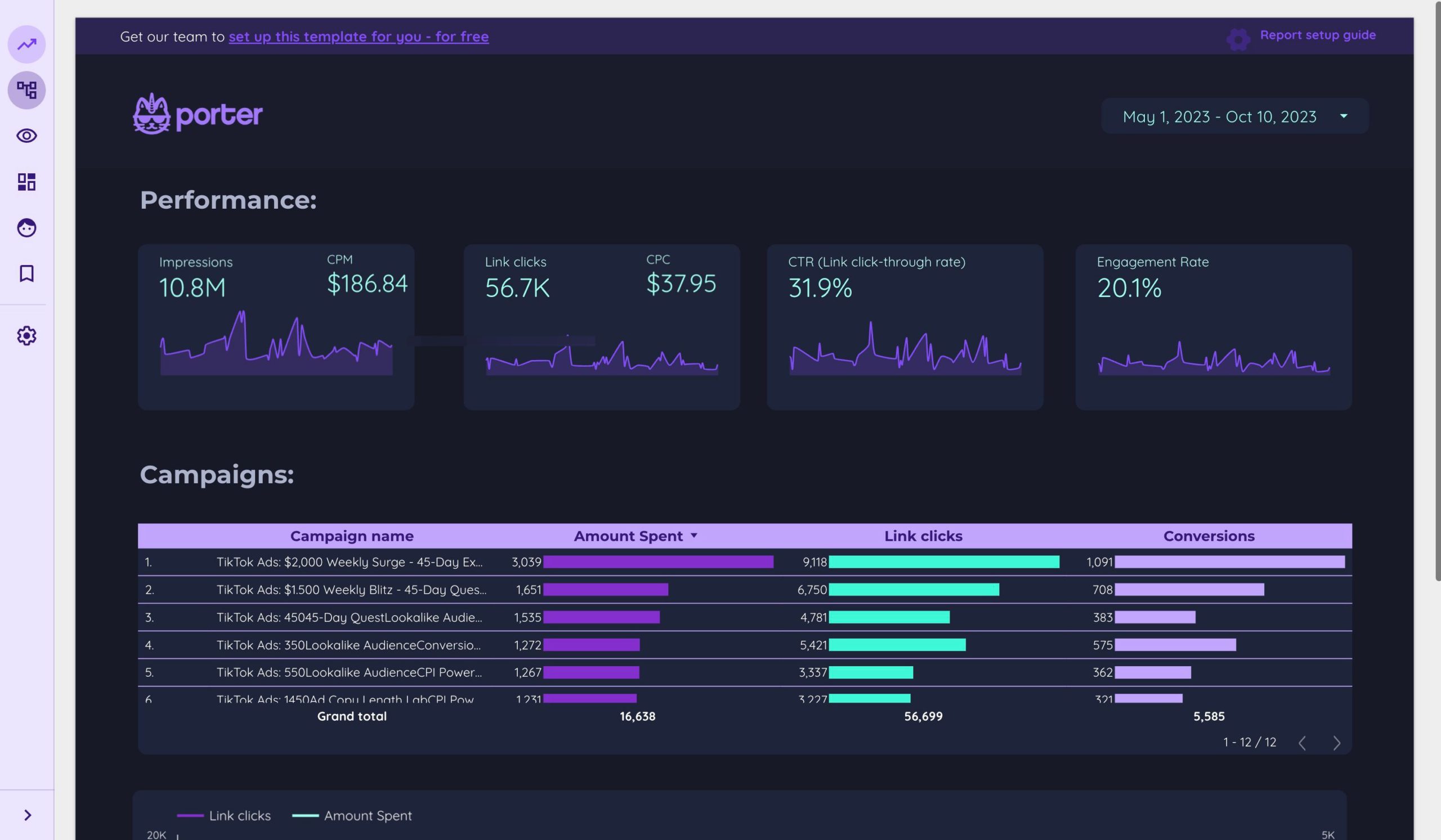
TikTok Ads Report template for Marketing teams and agencies
Optimize TikTok Ads performance with this report template. Track CTR, conversion rate, and cost per conversion. Analyze impressions, reach, and engagement. Segment by audience, ad placement, and time. Perfect for PPC specialists aiming to achieve marketing goals and enhance strategy.
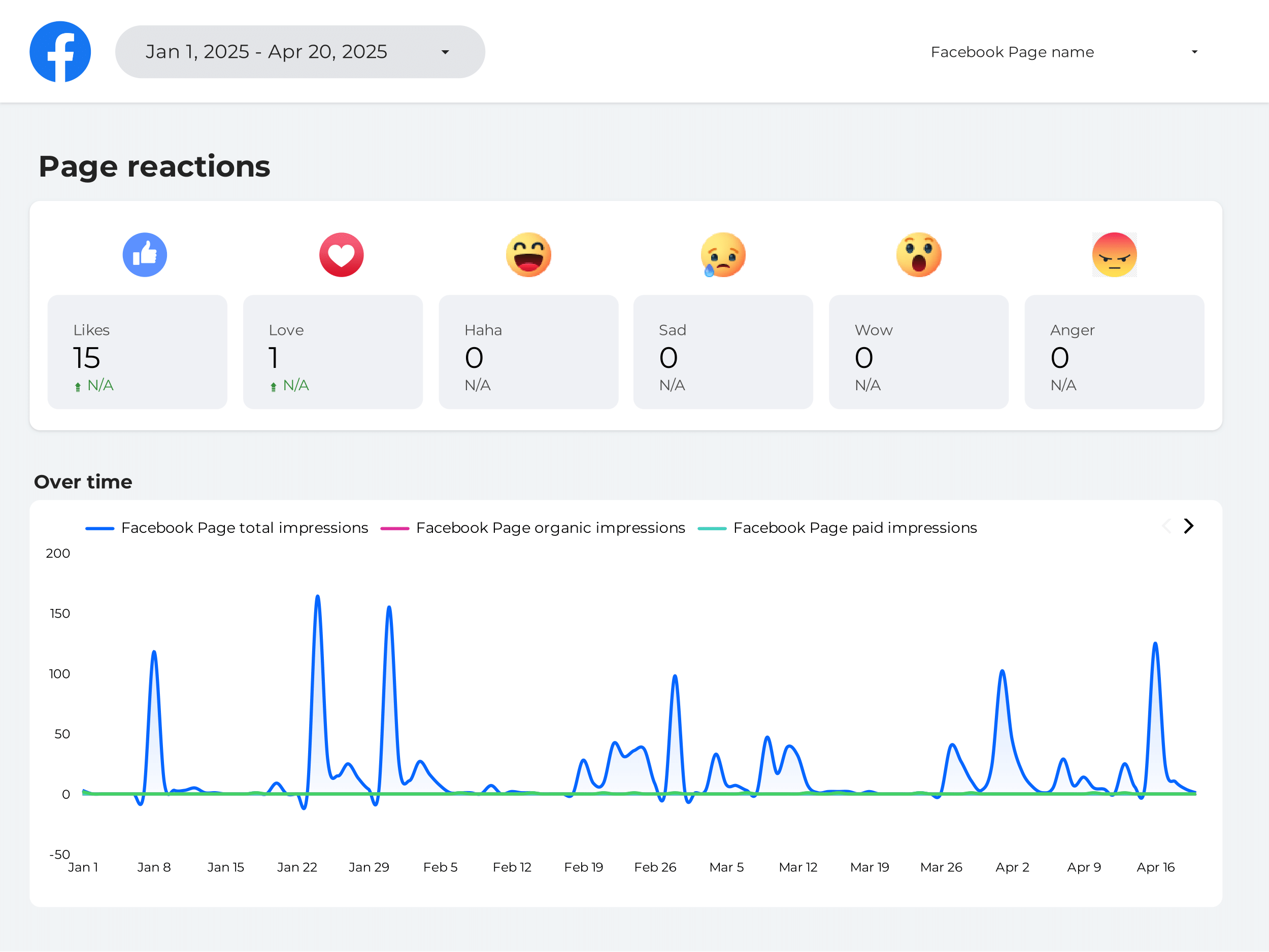
Brand awareness Report template for Marketing teams and agencies
Awareness report template consolidates key metrics like CTR, CPA, and conversion rate from Social Media, Instagram Insights, and LinkedIn Pages. Analyze demographics, psychographics, and behavior over time. Perfect for marketing teams to track performance and strategy, providing actionable insights into audience engagement and organic search ranking.

Facebook Ads Audience Report template for Marketing teams and agencies
Get the actual Facebook Ads Audience on Looker Studio template used by Porter to monitor PPC performance.
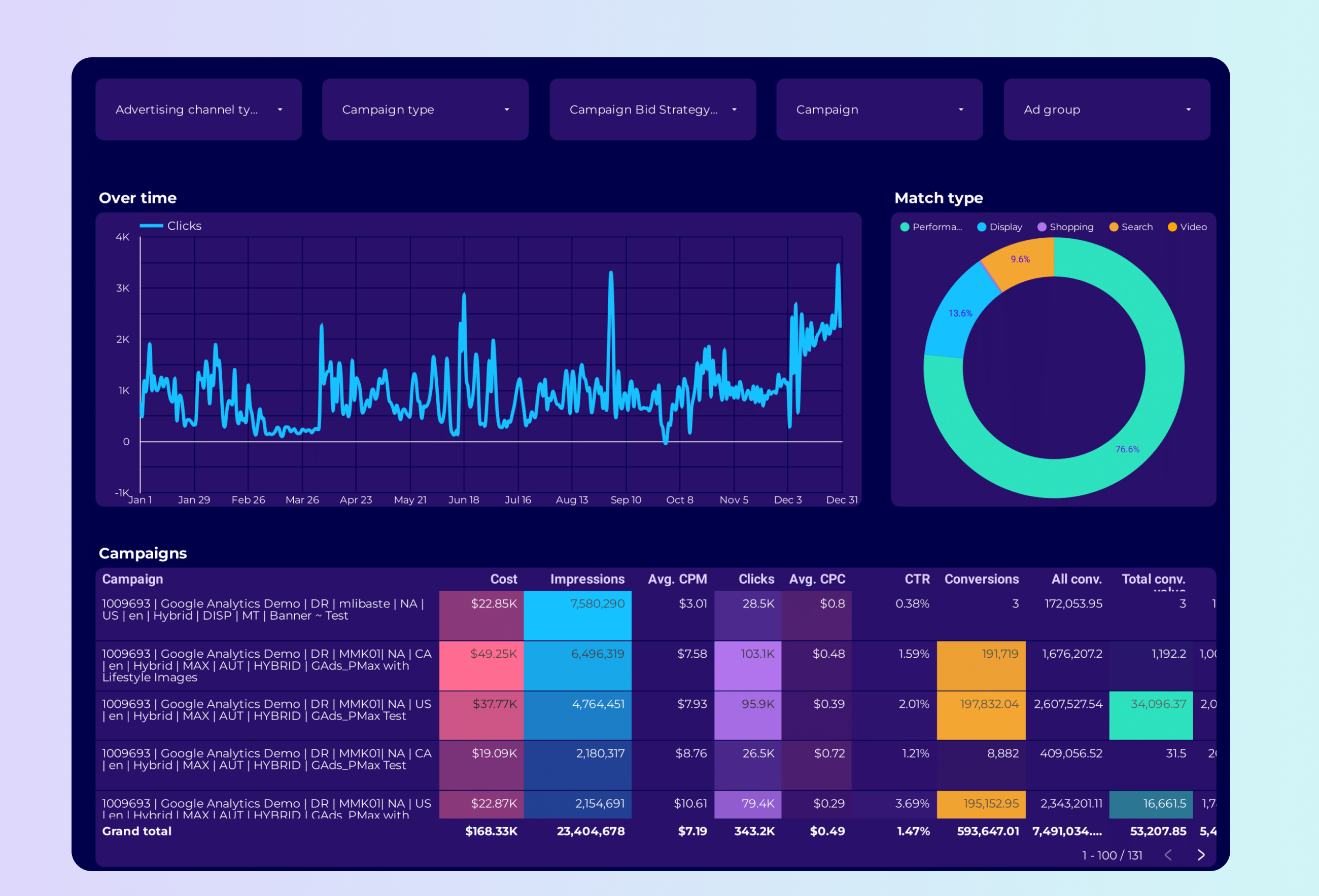
Google Ads PMax Report template for Marketing teams and agencies
Track key metrics with this Google Ads PMax report template. Measure conversion value, CTR, and impressions. Analyze by campaign type, audience segment, and time period. Consolidate data from Google Ads and Paid Media for actionable insights. Ideal for marketing teams focused on optimizing PPC performance and achieving strategic goals.
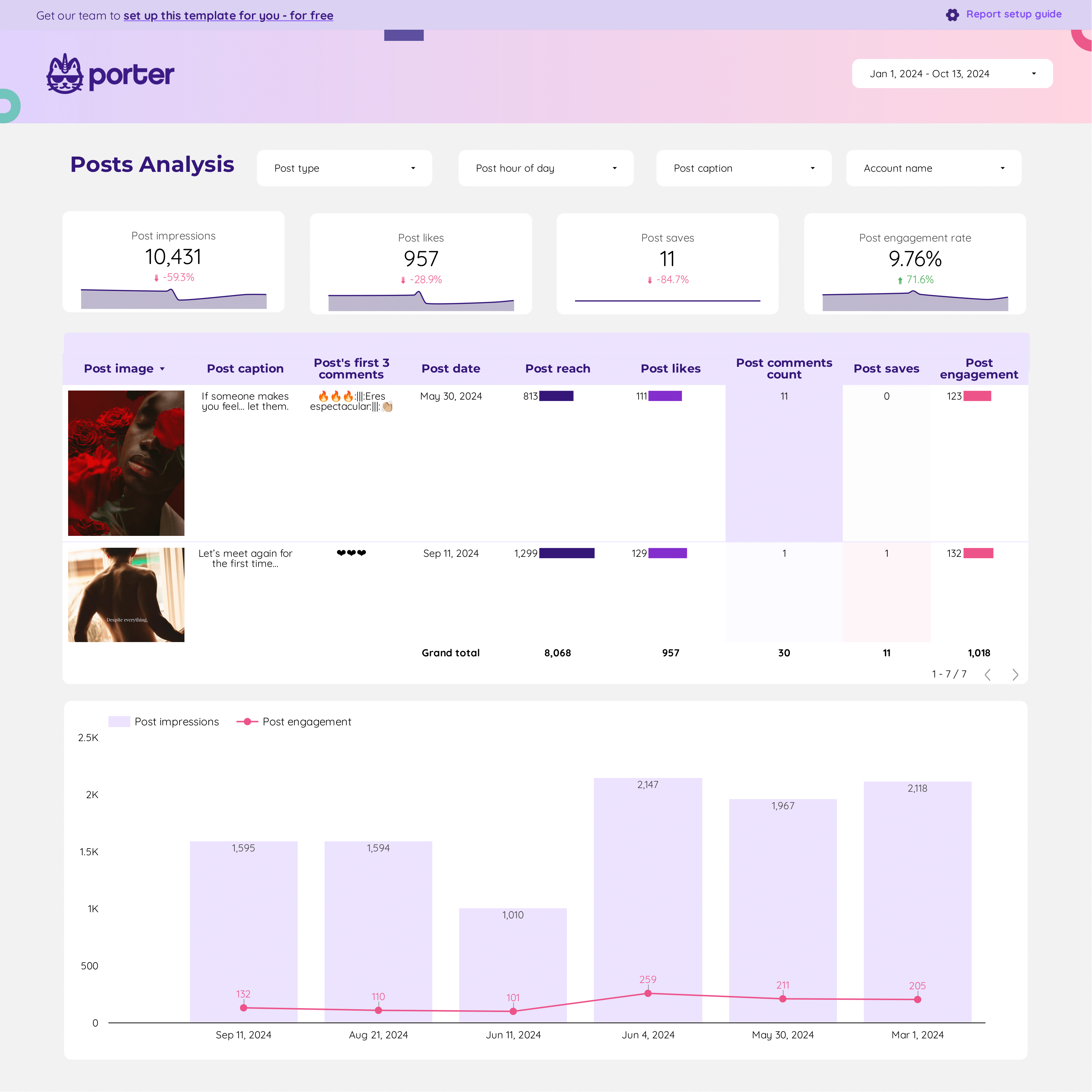
Instagram Insights KPIs Report template for Marketing teams and agencies
Track key metrics with the Instagram Insights KPIs report template. Analyze website clicks, profile visits, and engagement. Segment by campaign, location, and time. Perfect for social media marketers to consolidate data from Instagram Insights, optimizing strategy. Monitor performance across demographics and objectives for actionable insights.
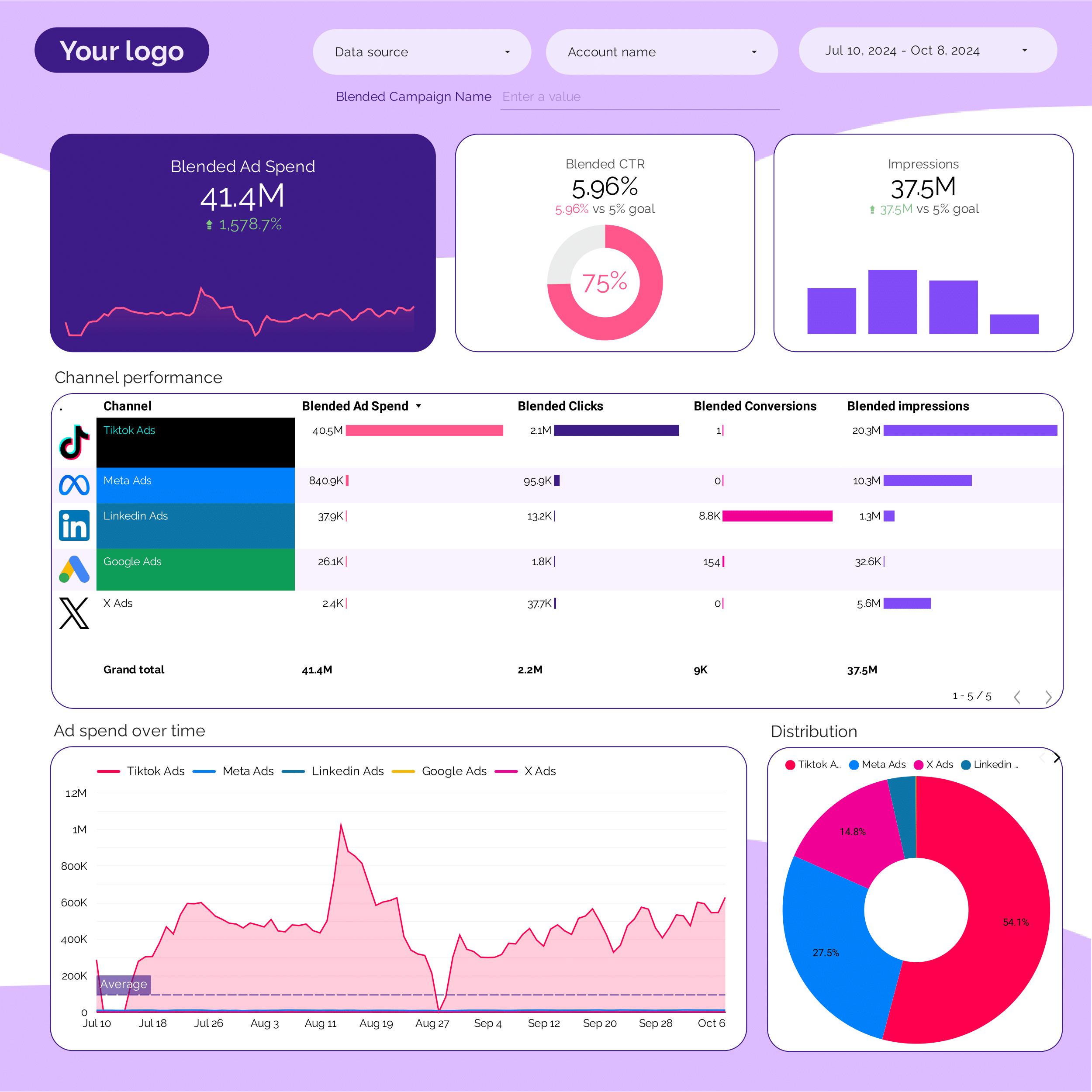
PPC Report template for Marketing teams and agencies
Optimize your PPC strategy with this report template. Track metrics like conversion rate, ROAS, and CTR across Facebook Ads, TikTok Ads, and Google Ads. Analyze by audience, channel, and time. Ideal for marketing teams to measure campaign performance and achieve objectives efficiently.
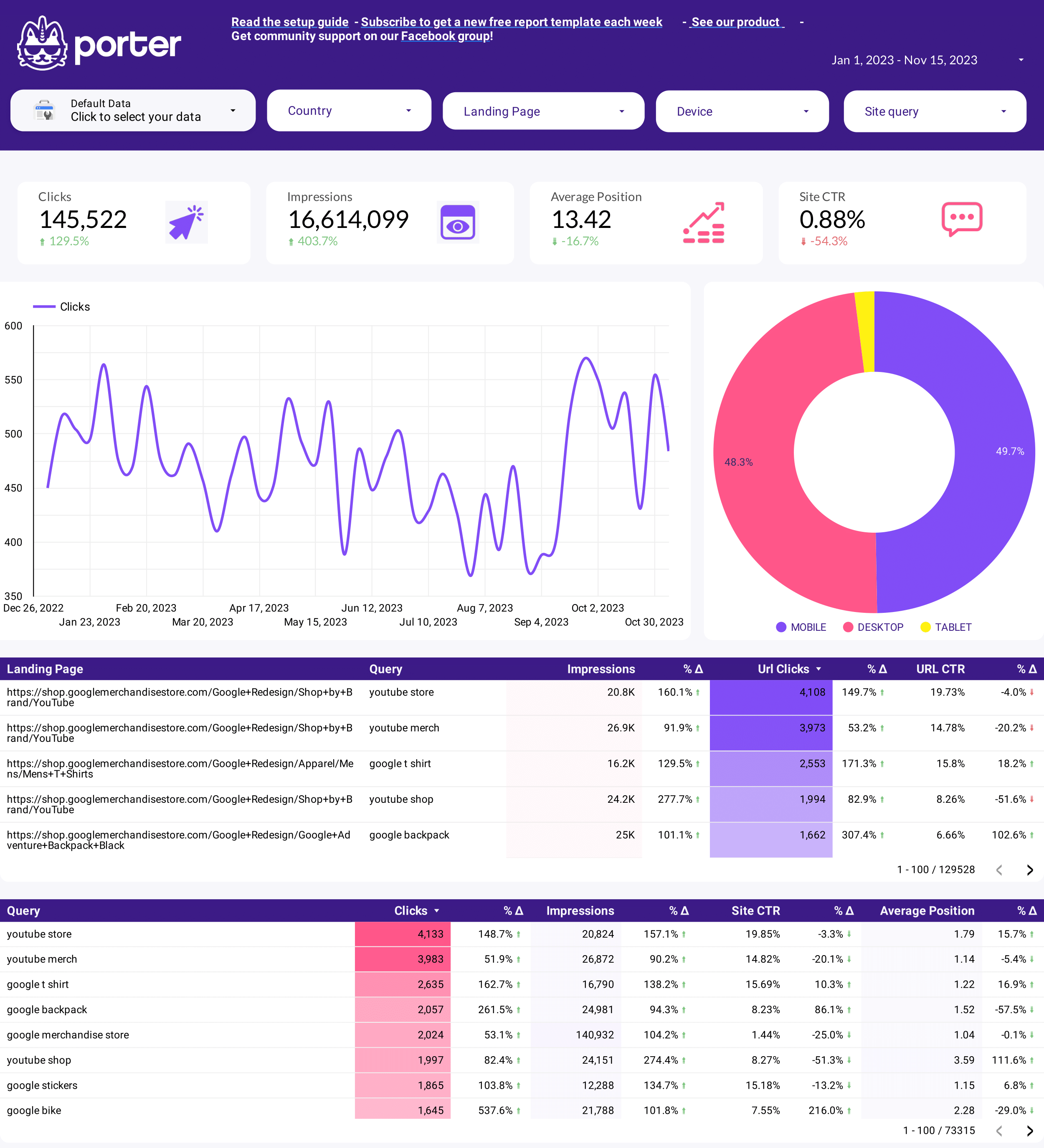
SEO Report template for Marketing teams and agencies
This SEO report template helps track key metrics like conversion rate, ROI, and CTR. Analyze organic search traffic and keyword rankings. Segment by audience, channel, or time. Integrate data from Google Search Console and content marketing. Ideal for marketing teams to measure performance and achieve specific goals.
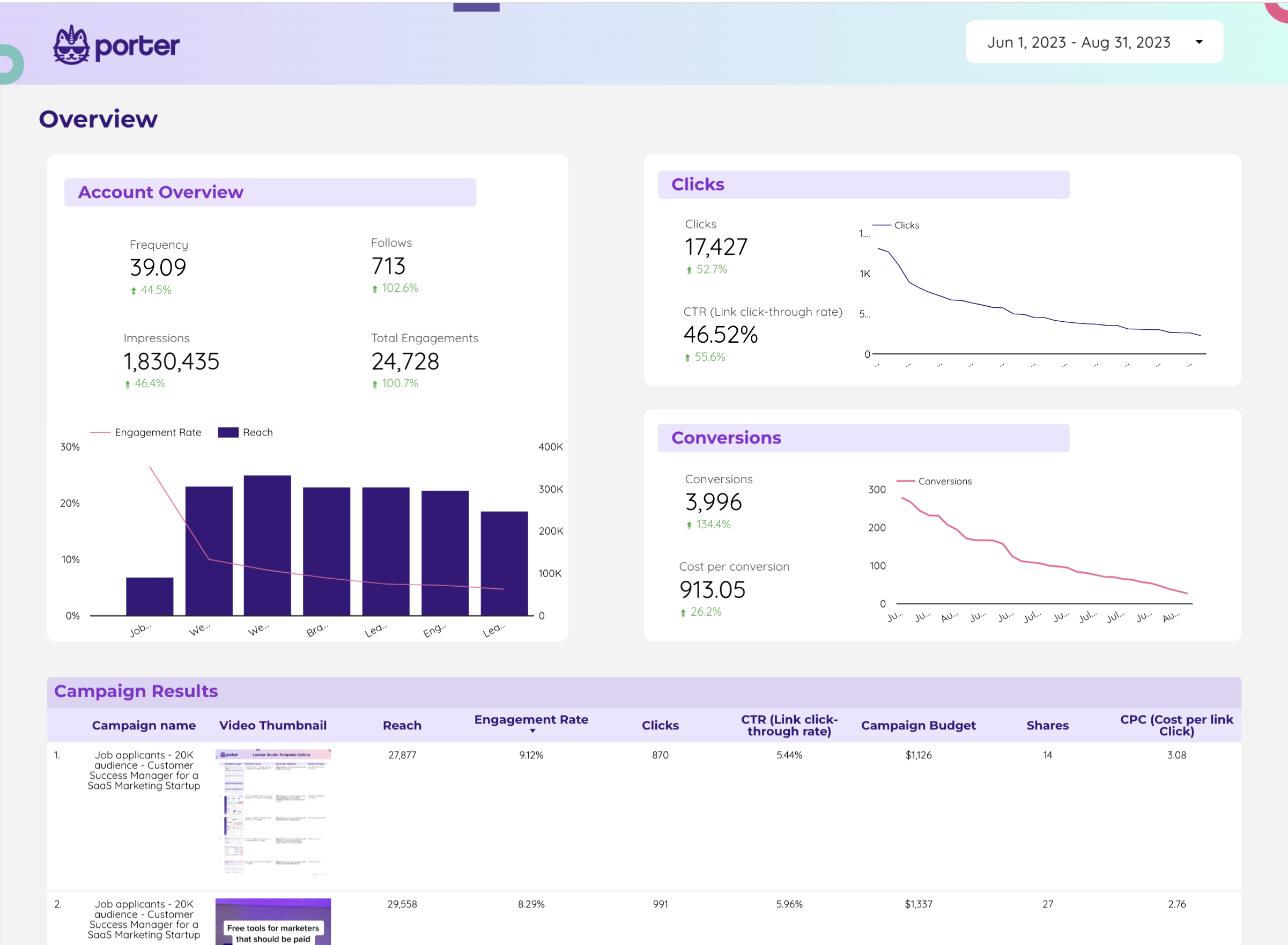
Twitter Ads Report template for Marketing teams and agencies
Analyze key metrics like CTR, conversion rate, and social actions with this Twitter Ads report template. Track performance by campaign objective, ad format, and audience targeting. Segment data by time, location, gender, and age. Perfect for PPC specialists to consolidate Twitter Ads and Paid Media strategies for actionable insights.
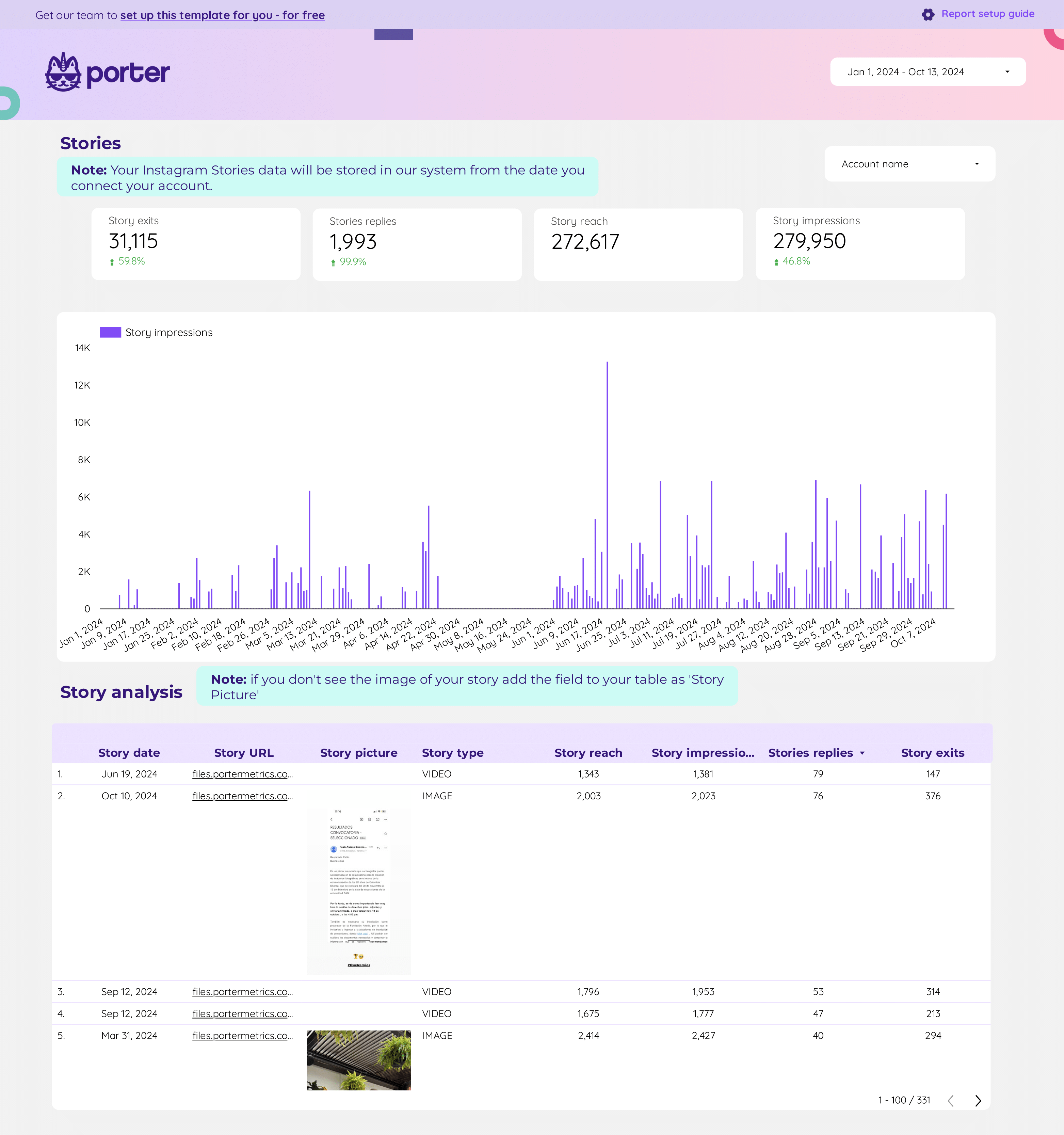
Community manager Report template for Marketing teams and agencies
Community manager Social Media report template tracks key metrics like conversion rate, cost per conversion, and engagement. Analyze dimensions such as campaign duration, budget, and audience demographics. Monitor likes, shares, and comments across Social Media platforms. Ideal for community managers to consolidate data and refine social media strategy.
Facebook Ads budget tracking and pacing Report template for Marketing teams and agencies
Optimize your Facebook Ads budget with this tracking and pacing report template. Analyze CTR, conversion rates, and cost per conversion. Segment by audience, ad placement, and timing. Track key metrics across demographics and timeframes. Perfect for PPC specialists aiming to enhance Facebook Ads performance and budget efficiency.
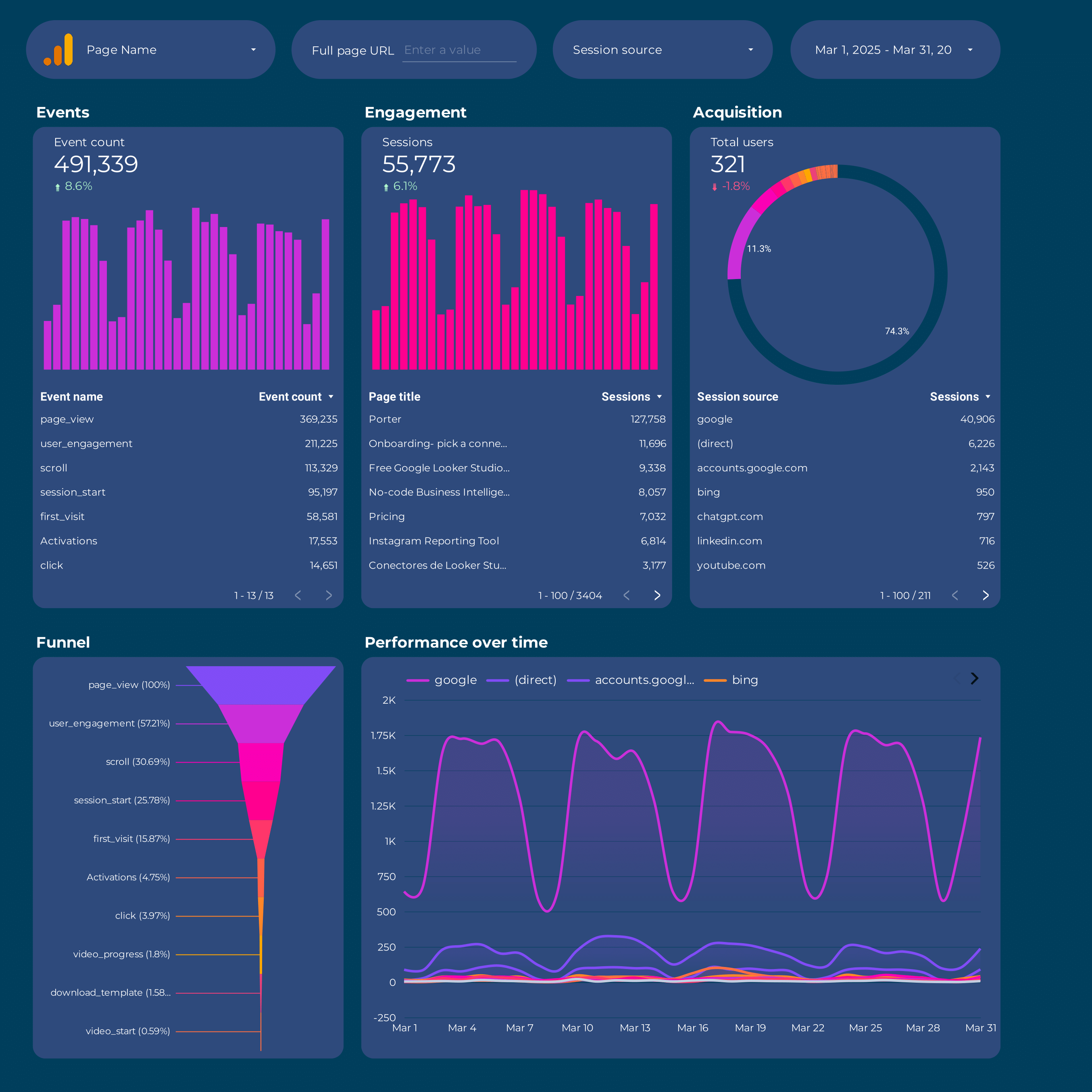
Google Analytics 4 Report template for Marketing teams and agencies
Optimize your e-commerce strategy with this Google Analytics 4 report template. Track conversion metrics, session duration, and bounce rate. Analyze impressions, CTR, and average position. Segment by campaign, age, gender, and device. View data by hour, day, or year. Perfect for marketing teams to enhance website performance and achieve objectives.
PPC budget tracking and pacing Report template for Marketing teams and agencies
Get the actual PPC budget tracking and pacing on Looker Studio template used by Porter to monitor PPC performance.

SEO Keyword ranking tracker Report template for Marketing teams and agencies
Optimize your strategy with the SEO Keyword ranking tracker report template. Measure key metrics like conversion rates, ROI, and click-through rates. Analyze organic and paid keyword rankings, demographic insights, and online behavior. Segment data by timeframes. Perfect for marketing teams aiming to consolidate performance insights and achieve specific goals.
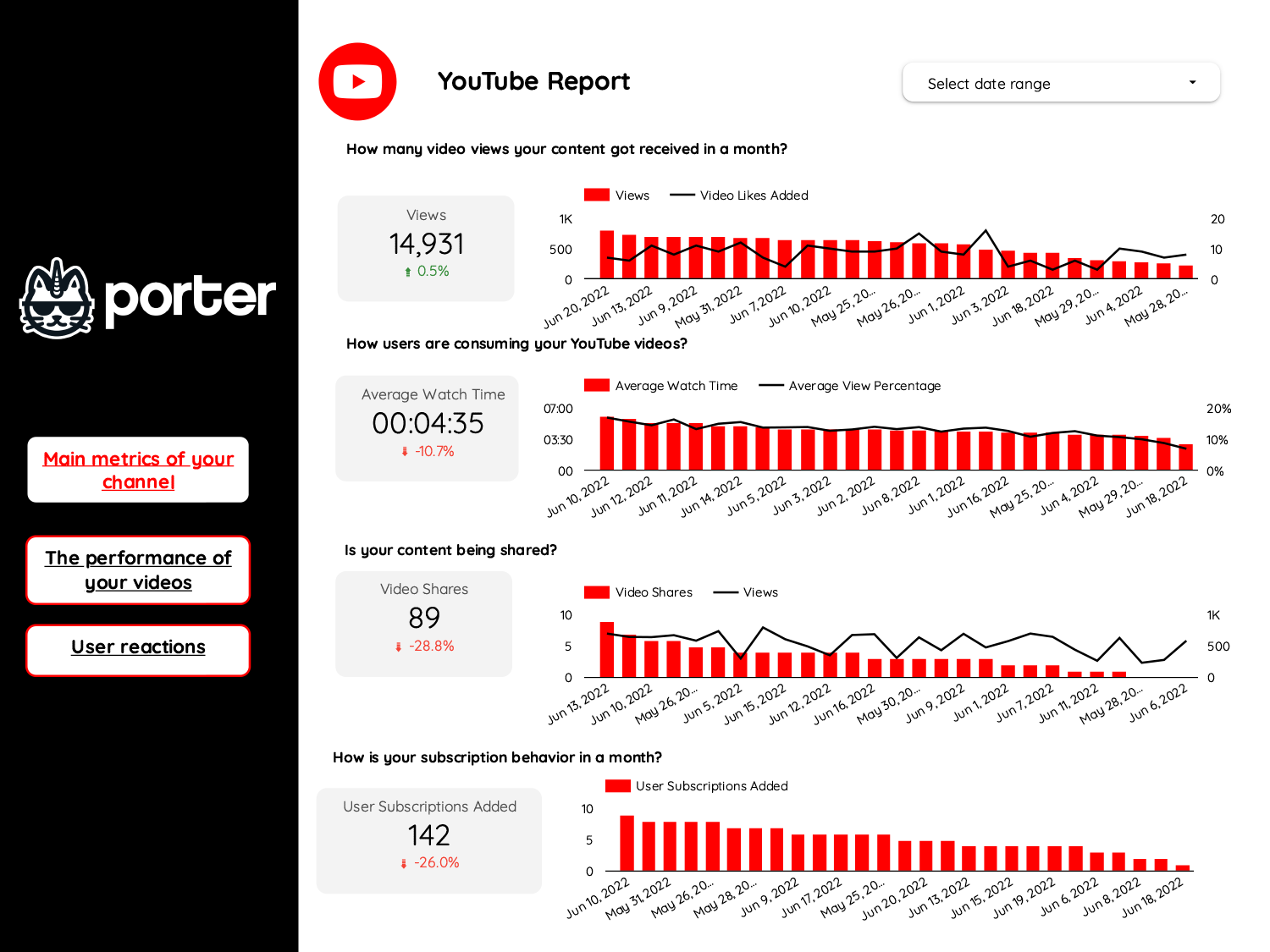
Video marketing Report template for Marketing teams and agencies
Optimize your social media and YouTube strategies with this Video marketing report template. Track CTR, conversion rate, ROI, likes, shares, and views. Analyze demographics, psychographics, and geographic data. Gain actionable insights to enhance performance and meet marketing goals. Perfect for marketing teams seeking to unify key metrics and drive success.

